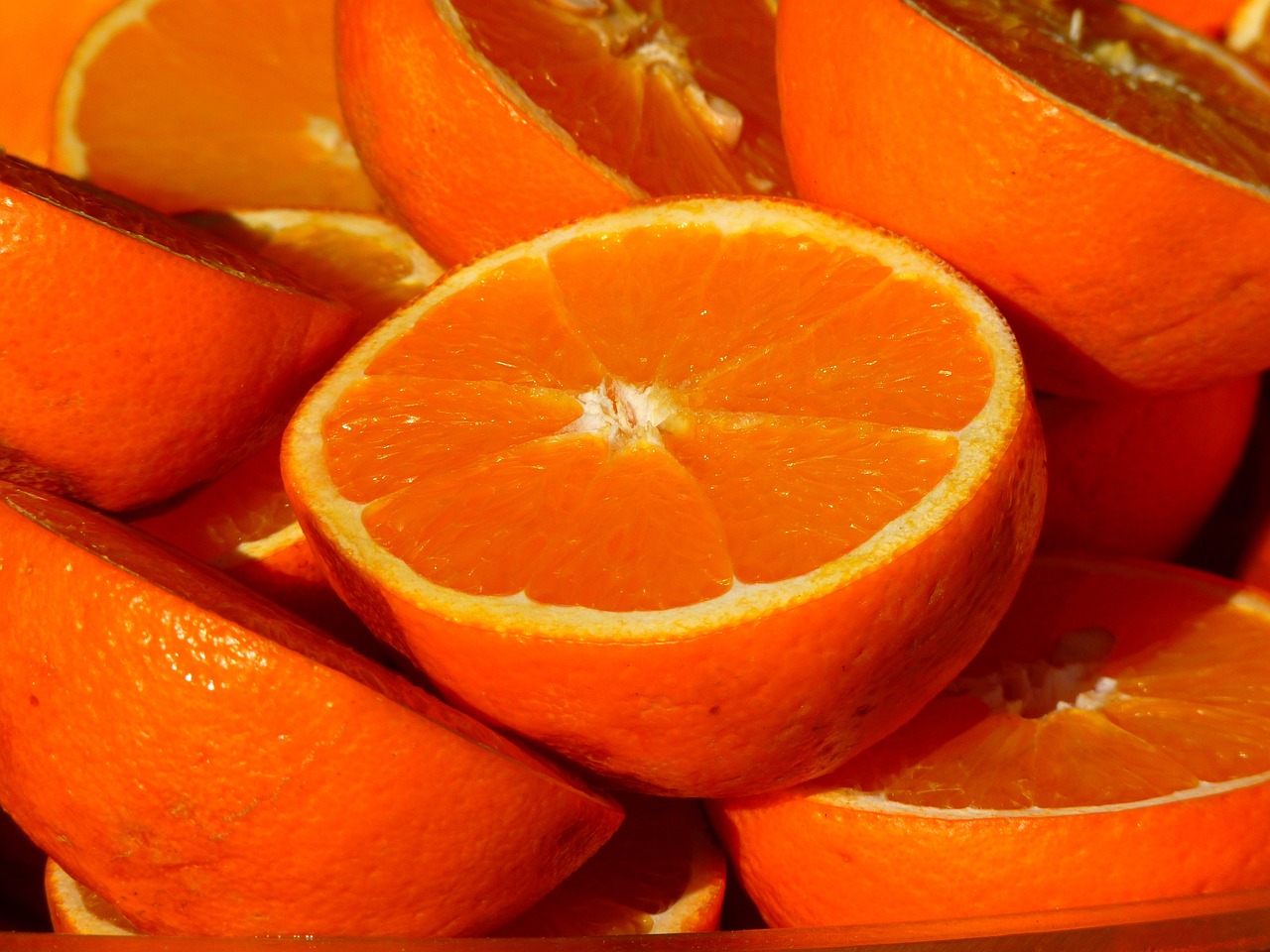Fruits are classified into different groups based on their features and characteristics. The methods used for fruit classification vary depending on the aim of the classification. The main goal of fruit classification is to provide a better understanding of the fruit and its properties to serve different purposes in the fruit industry such as identification, quality control, storage, and marketing.
There are various methods of fruit classification, and this article aims to explore them in detail. The methods include morphological classification, chemical classification, respiration rate classification, ripening classification, and geographical classification.
Morphological classification is based on the physical characteristics of fruits such as shape, size, color, and texture. This method is widely used for identification purposes. Chemical classification, on the other hand, is based on the chemical properties of the fruit, such as their sugar content, acidity, and volatile compounds. This method is mainly used for quality control.
Respiration rate classification is based on the rate at which fruits produce and consume oxygen. Climacteric vs. non-climacteric fruits is a type of respiration rate classification that defines fruit respiration patterns. Ripening classification, on the other hand, is used to categorize fruits based on their maturity level during the ripening process. Finally, geographical classification is used for fruits based on their geographical origin.
Overall, fruit classification is a crucial aspect of the fruit industry, and it serves various purposes. The different classification methods help us to understand the fruit better and utilize its properties for various uses.
Morphological Classification
Morphological classification is the categorization of fruits based on their physical characteristics which include shape, size, texture, and color. This method of classification is the most commonly used and easily recognized by the general public. There are different types of morphological classification, including simple fruits, aggregate fruits, and composite fruits.
Simple fruits are those that develop from one flower with one ovary, and they can be further classified based on whether they are fleshy or dry. Fleshy fruits are those that have a soft and juicy interior, and they can be further categorized based on their seed distribution within the fruit. Dry fruits, on the other hand, are those whose pericarp hardens at maturity and can either split open to release the seeds or remain closed.
Aggregate fruits, on the other hand, develop from one flower with several ovaries. Each ovary produces a single fruit that joins together to form a larger fruit with many small seed-bearing units. Lastly, composite fruits are formed from a group of flowers that are compacted together to create a large fruit, such as a pineapple or fig.
Understanding morphological classification is crucial for growers, sellers, and consumers to ensure that the fruits they are handling or purchasing are of high quality and fit for their intended use. Furthermore, this method of classification plays a significant role in the marketing and identification of fruits in the industry.
Chemical Classification
Chemical classification is an important method of categorizing fruits based on their chemical properties. It is largely dependent on the sugar content, acidity and volatile compounds present in the fruits. This classification is used predominantly for determining the quality of fruits and their suitability for commercial purposes such as juicing or canning.
Chemical tests are carried out to determine the levels of sugar and acidity in fruits. These tests are known as refractometry and titrations, respectively. Refractometry is used to determine the Brix level, which is the amount of sugar present in the fruit. Titrations, on the other hand, measure the acidity of the fruit by determining its pH level.
Apart from sugar content and acidity, volatile compounds present in fruits can also affect their chemical classification. These compounds refer to the aroma and flavor components in the fruits. They are responsible for the unique taste and smell of different fruits.
Chemical classification plays a significant role in the fruit industry. The quality of fruits can be determined by their sugar content, acidity and volatile compounds. Fruit classification based on these chemical properties helps in improving the commercial value of fruits. It assists in deciding whether the fruits are suitable for processing, juicing or canning. Hence, chemical classification is a crucial method that aids in the growth of the fruit industry.
Respiration Rate Classification
Respiration rate classification is one of the methods used for fruit classification. This method involves measuring the rate at which fruits produce and consume oxygen. Fruits that produce more carbon dioxide than they consume are classified as climacteric, while non-climacteric fruits do not have a significant rise in respiration after being harvested.
The classification of fruits based on their respiration rate is important in determining the optimal storage conditions. Fruits with a high respiration rate, such as apples, need to be stored in refrigerated conditions to slow down the respiration process and prolong their shelf life. On the other hand, fruits with low respiration rates, such as oranges, can be stored at room temperature.
Apart from storage, respiration rate classification is also used in determining the maturity level of fruits, as the respiration rate increases as fruits ripen. This method of fruit classification is also utilized in marketing, as it helps in determining the best time to harvest and sell the fruit.
Overall, classification based on respiration rate is an important method in the fruit industry, as it helps in determining the storage conditions, maturity level, and optimal time for harvesting and selling fruits. It is an essential aspect of maintaining the quality of fruits and ensuring their long shelf life.
Climacteric vs. Non-Climacteric Fruits
When it comes to fruit classification, one important factor to consider is their respiration rate. This is the rate at which a fruit produces and consumes oxygen, and it plays a key role in determining the fruit’s ripening process. Fruits can be classified into two categories based on their respiration rate: climacteric and non-climacteric.
Climacteric fruits are those that continue to ripen even after they have been harvested. This is because they produce a gas called ethylene, which triggers the ripening process. Some examples of climacteric fruits include apples, bananas, and tomatoes. On the other hand, non-climacteric fruits do not produce ethylene, so their ripening process is largely determined by external factors such as temperature and humidity. Some examples of non-climacteric fruits include citrus fruits, grapes, and strawberries.
Understanding the differences between climacteric and non-climacteric fruits is important for fruit growers and distributors, as it can help them to determine the best harvesting and storage practices. For example, climacteric fruits should be harvested when they are still slightly under-ripe, as they will continue to ripen off the tree. Meanwhile, non-climacteric fruits should be harvested when they are fully ripe, as they will not continue to ripen once they have been picked.
Overall, the classification of fruits based on their respiration rate is a valuable tool for understanding the ripening process and ensuring that fruits are harvested and stored under optimal conditions.
Ripening Classification
Ripening classification is an important method of categorizing fruits based on their maturity level during the ripening process. This classification helps in determining the optimal harvesting time and storage condition of the fruits. Fruits are classified into the following categories based on their ripening characteristics:
- Non-climacteric fruits: These fruits do not have a high respiratory rate and do not ripen after harvest. Examples of non-climacteric fruits include strawberry, grape, and pineapple.
- Climacteric fruits: These fruits have a high respiratory rate and ripen after harvest. Examples of climacteric fruits include apple, banana, and avocado.
Fruits are further classified based on their ripening stages, which can be determined by their color, texture, and flavor. This classification helps in determining the shelf life of the fruits and their suitability for consumption. Some fruits are harvested when they are fully ripe, while others are harvested when they are still unripe and allowed to ripen off the tree. Fruits that are harvested too early may not ripen properly and may have poor taste and texture.
In summary, ripening classification is an important tool for fruit farmers and marketers to ensure that fruits are harvested at the right time and stored or transported under optimal conditions to maintain their quality and freshness.
Geographical Classification
Geographical classification of fruits is a method of categorizing fruits based on their place of origin. It is an important aspect of fruit classification, especially for the fruit industry. The different geographical classification methods used for fruits include region, country, and continent of origin.
For example, some fruits may be classified as tropical fruits, indicating that they originated in tropical regions such as South America, Central America, and the Caribbean. On the other hand, some fruits may be classified as temperate fruits, indicating that they originated in temperate regions such as Europe and North America.
Geographical classification is useful in identifying the type of fruit and its unique characteristics based on its place of origin. It helps in quality control by ensuring that only fruits from specific regions are used for certain products. It also helps in marketing, as the origin of a fruit can be used as a selling point.
Overall, geographical classification is an important method of fruit classification that plays a crucial role in the fruit industry, from production to marketing.
Uses of Fruit Classification
Fruit classification plays a crucial role in the fruit industry. It is used for various purposes such as identification of fruits, quality control, storage, and marketing. With the help of fruit classification, the fruit industry can ensure that only high-quality fruits are sold to consumers.
The identification of fruits is essential in the fruit industry, and fruit classification can aid in this process. By categorizing fruits into different groups based on their characteristics and properties, it becomes easier to identify them. This, in turn, helps ensure that consumers receive the type of fruit they desire.
Fruit classification is also used for quality control purposes. By categorizing fruits based on their characteristics, it becomes easier to identify any fruits that do not meet the quality standards set by the industry. This helps to ensure that only high-quality fruits are sold to consumers.
In addition to identification and quality control, fruit classification is also used for storage purposes. By categorizing fruits based on their ripeness and respiration rate, the industry can determine the best way to store them. This helps to ensure that fruits remain fresh for a longer period of time.
Finally, fruit classification is also used for marketing purposes. By categorizing fruits into different groups based on their characteristics, the industry can target specific consumer groups. For example, by labeling fruits as “organic” or “locally grown,” the industry can appeal to consumers who are interested in these types of products.


